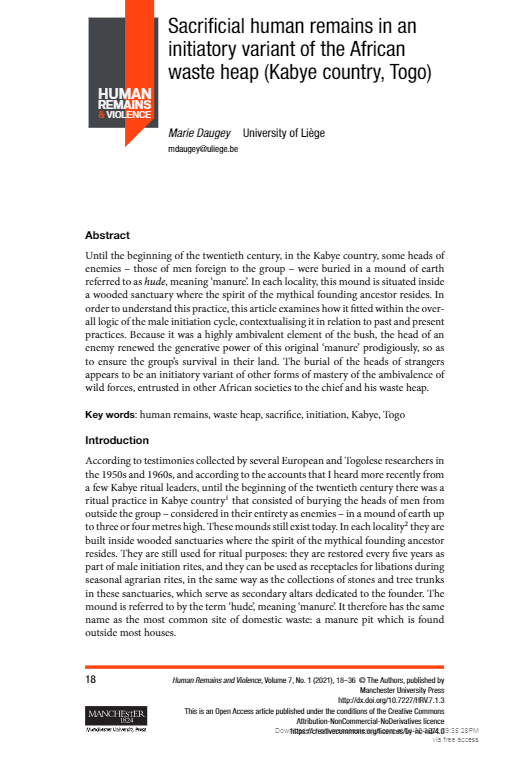Sacrificial human remains in an initiatory variant of the African waste heap (Kabye country, Togo)
Licencia: Creative Commons (by-nc)
Autor(es): Daugey, Marie
Until the beginning of the twentieth century, in the Kabye country, some heads of enemies - those of men foreign to the group - were buried in a mound of earth referred to as hude, meaning ‘manure'. In each locality, this mound is situated inside a wooded sanctuary where the spirit of the mythical founding ancestor resides. In order to understand this practice, this article examines how it fitted within the overall logic of the male initiation cycle, contextualising it in relation to past and present practices. Because it was a highly ambivalent element of the bush, the head of an enemy renewed the generative power of this original ‘manure' prodigiously, so as to ensure the group's survival in their land. The burial of the heads of strangers appears to be an initiatory variant of other forms of mastery of the ambivalence of wild forces, entrusted in other African societies to the chief and his waste heap.
[2021]
Compartir:
Una vez que el usuario haya visto al menos un documento, este fragmento será visible.


